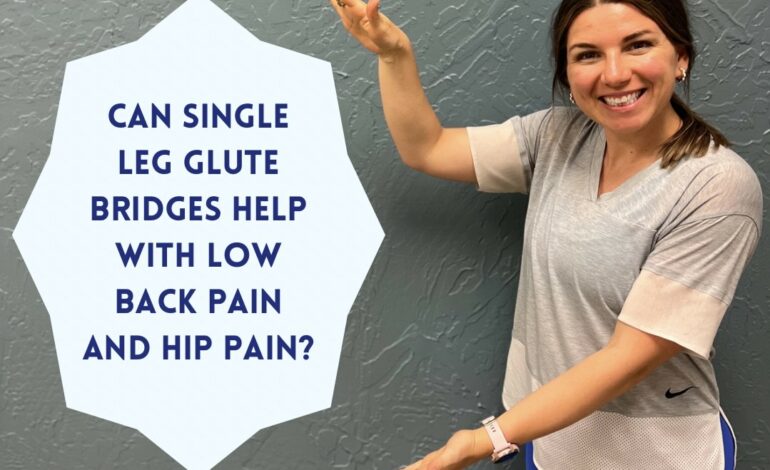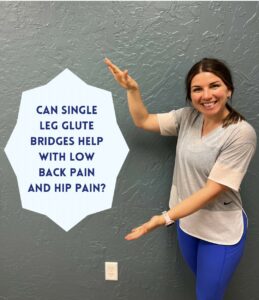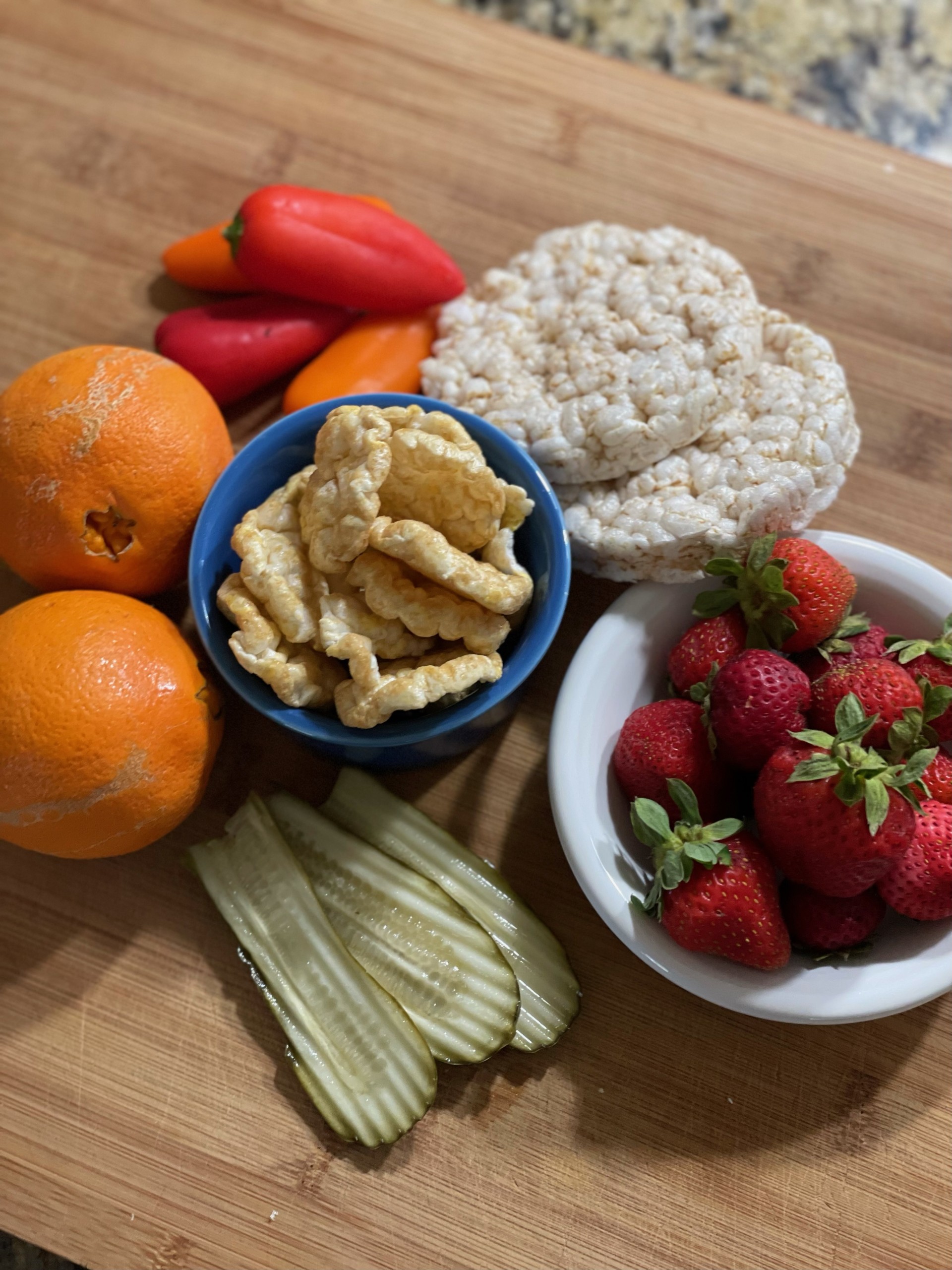Can single leg bridges help with back pain or knee pain? by Dr. Hailey Jackson

Can single leg bridges help with back pain or knee pain?
 What is often a common denominator underlying hip pain, low back pain, urinary incontinence, and/or knee pain? Single leg stability– more specifically glute med strength, coordination, and endurance.
What is often a common denominator underlying hip pain, low back pain, urinary incontinence, and/or knee pain? Single leg stability– more specifically glute med strength, coordination, and endurance.
So today we’re chatting all things glute bridge, and specifically a single leg glute bridge. Let’s dive in!
All about the glutes first:
The glutes are the most superficial muscles on the back of your hips. They extend your hips, or move your leg backwards. There’s three of them– the glute min, glute med, and glute max. The glute max is the most superficial and most powerful. The glute med acts as a pelvic stabilizer when you stand on one leg and controls the knee in the frontal plane (keeps the knee from diving in when you’re squatting) – it’s a super important muscle considering we spend 40% of the gait cycle on one leg. And the glute min is the innermost of the three.
Glute bridges target these three glute muscles, as well as your hamstrings, some of the muscles in your low back, and if performed correctly, your core muscles. Single leg glute muscles isolate the glute med as your pelvis has to fight to stabilize on one leg.
Regarding day-to-day life, bridges are super beneficial for functional activities like getting out of bed and getting off of the ground when laying on your back. But if performing glute bridges to increase exercise capabilities, bridges and single leg bridges are great for enhancing like squats and deadlifts. Bridges are super beneficial for the glutes because they isolate and target these muscles more than squats or deadlifts as people are able to compensate with squats by relying more on their quads and deadlifts with hamstrings.
How do single leg bridges strengthen glutes? When isolating bridges to one leg, pelvic stability is required, thus the glute med is activated and isolated. Another way to target the glute med if you are unable to complete this exercise with one leg is adding an exercise band around your legs just above your knees.
You might notice when squatting that your knees dive in, or move towards each other like they’re going to kiss, which is not optimal and can lead to hip back and knee pain/injuries and also contributes to incontinence. But isolating and activating the glute med, you gain more control over your knee, and as these muscles are strengthened your knees should become more stable, thus not moving in towards each other. This translates to greater single leg stability and lumbopelvic coordination.
How do glute bridges help with low back pain/knee pain?
Typically when pain persists at a joint, the musculoskeletal or neuromuscular source of the pain is not only coming from that joint, but muscle/muscle groups of a joint above or below. The glute muscles are sandwiched between the low back and knees, a very common area that people experience pain in America. And by strengthening these muscles, we’re stabilizing the lumbopelvic region, taking a load off of the low back and creating more stability in the knee complex. By creating more stability at the knee complex, we’re also taking a load off of the ligaments and decreasing the likelihood of a ligamentous/soft tissue injury at the knee.
Some common mistakes people make with glute bridges include overextending their hips or starting with a variation of the movement that is too complex for them at the time that they’re starting this exercise. Glute bridges should not be painful, and if they are, the movement should be modified.
To avoid hyper extending your hips and low back, only lift your hips up to where you have a straight line from your shoulders to your knees when in the extended position of the bridge and try to avoid arching your back. To avoid starting with a movement that is too complex, listen to your body. And if the movement is painful, modify to an easier version of the movement as needed. Ideally, you should be able to complete 10-15 repetitions without having to break.
A few of my favorite flavors of this movement include:
-
Glute bridge with ball between knees
-
Glute bridge with band just above your knees
-
Glute bridge with dumbbell or weight on your hips
-
Glute bridge with your feet elevated
-
Single leg glute bridge
-
Single leg glute bridge with band
-
Single leg glute bridge with weight
-
Single leg glute bridge with chest press
For more information visit www.txpelvichealth.com or follow @thepowerfulpelvis on instagram. To schedule a 60 min 1-on-1 appointment with a doctor of physical therapy for back pain, hip pain, or urinary incontinence, call 903-962-2600 or email hello@txpelvichealth.com.
 Instagram: https://www.instagram.com/thepowerfulpelvis/
Instagram: https://www.instagram.com/thepowerfulpelvis/Facebook: https://www.facebook.com/thepowerfulpelvis
Booking: https://app.pteverywhere.com/texaspelvichealth/bookingonlinePtE/category=6467dbd0d672a8cd153492c3














